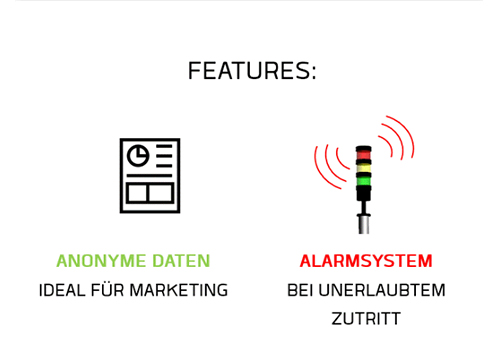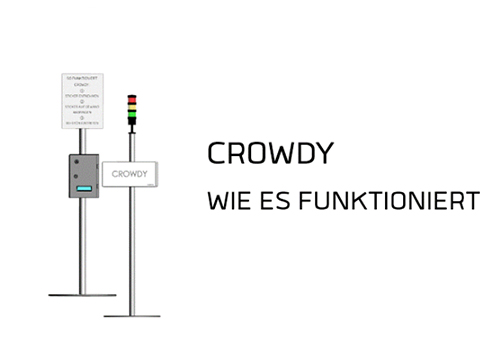
The retail industry resumes work safely and quickly, and RFID technology cleverly solves the problem of “maintaining social distance”
[ad_1]
People all over the world have begun to recover from the new crown pneumonia epidemic. In order to minimize the continuous spread of the disease and ensure people’s safety, the usual social distancing advice is: keep one to two meters between people. This rule means that small stores can only enter one or two customers at a time, and large stores can have dozens of customers. An Austrian solution provider is working hard to create a fully automated system to help stores reopen, while complying with guidelines for maintaining social distancing.

Resource-intensive process
In order to control the passenger flow of retail stores, businesses have their own coups and ingenuity. Some companies appoint employees to act as janitors and open the door to welcome new customers after customers leave; some companies set up manual counters at the door, assign employees to work, and count the number of people entering and leaving. When the number of people in the store is close to the upper limit, new customers will be suspended. Large retail stores may need to arrange more employees. They will designate an entrance and an exit, and assign an employee at the entrance and exit to monitor the number of people. When the number of people leaving the store reaches a certain number, the employees at the exit will send a signal to the employees at the entrance, telling them that more customers can enter the store.
These methods can effectively control passenger flow and limit the number of people in the store, but from an operational point of view, the efficiency is slightly lower. These methods all require the appointment of dedicated staff to be on duty throughout the store’s business period.
Red light stop, green light go
It is reported that the system will provide different forms of devices, the simplest form is a plug-and-play system, which can be used right out of the box. No technicians are required for installation. Store staff only need to open the package, place the system at the entrance, and plug it into a normal power outlet.
The system consists of two units, namely, the automatic picker and the gate. The automatic fetcher is placed a few feet before the entrance, and simple instructions are displayed on the display. The customer takes out the RFID electronic label sticker from the automatic picker and sticks it on the clothes or bag. The gate is placed at the entrance, and UHF RFID readers are used to read tags, and the number of people entering and exiting is counted electronically. The top of the gate is equipped with traffic lights, which can be used to inform customers when it is safe to enter the store. A green light means that you can enter, while a red light means that the store is full and customers need to wait for the admission signal.

Unlimited number of gates
If the store has only one entrance and exit, only one system needs to be installed to count the number of customers, control the flow of customers, and maintain social distancing. For stores with a more complex layout, the system can use the built-in WiFi function to connect to the online platform and monitor multiple entrances and exits at the same time.
The suspension of operations caused by the epidemic has caused many retail stores to fall into financial distress and it is difficult to quickly restore their previous income levels. Part of the reason is that consumer confidence has decreased, which has reduced consumption. Another reason is that stores need to increase additional expenses to maintain social distancing. New regulations. The new regulations require the number of customers to be counted, which usually means that an additional fee is required to hire existing employees or hire new employees to manage the number of in and outs. With the help of RFID technology, the store can maintain an appropriate number of people during business hours, allowing employees to focus on their daily work.

RFID technology behind intelligence
This system relies on the high reliability and long read range of UHF RFID technology, which means that it is unlikely that shoppers will be missed by passing through the gate. RFID electronic tags are specially coded for entrance and exit devices, so they will not interfere with any tag system already in use in the store.
The RFID system also has an anonymous tracking function, allowing detailed analysis. Measuring the time spent by customers in the store and determining peak hours can more effectively allocate the working hours of employees in the store. Store managers can use RFID handheld terminals or industrial tablet computers to download the data of staying time in the store and understand the dynamics of the store in real time. Through the WiFi interface, the system configuration can also be modified according to the customizable device. For example, the number of people allowed to enter the store can be increased or decreased as needed to comply with changing social distancing guidelines.
[ad_2]






